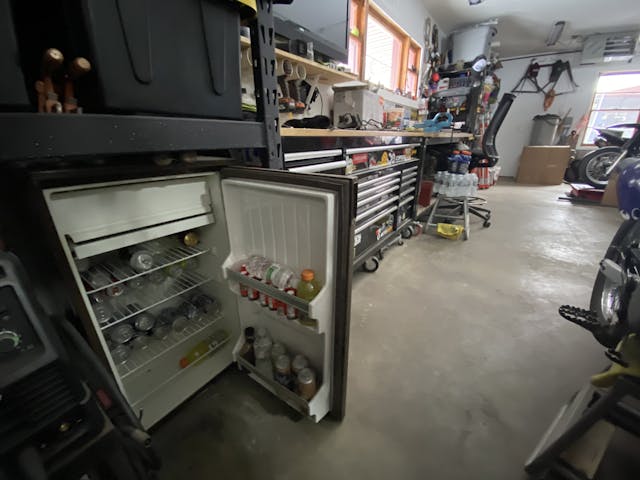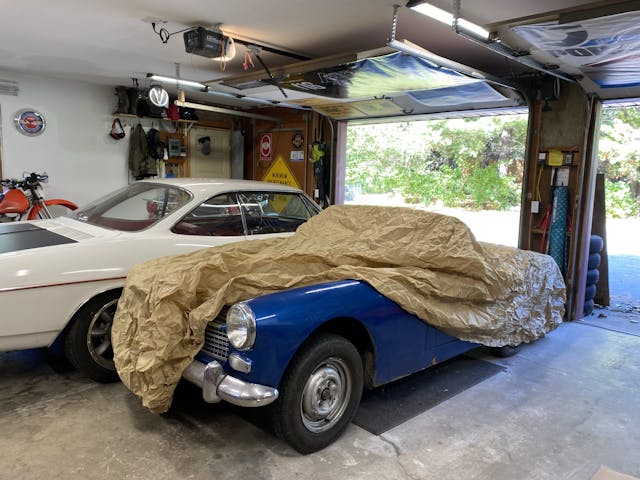Media | Articles
4 Things Silently Killing Your Vintage Car
You click the ignition key one detent to the right. A quick twitch of the right foot to tickle the accelerator pump and set the choke. Another touch on the key and . . .
Nothing.
What should be a crescendo of eight trumpets playing the V-8 version of taps and stirring the car person’s soul awake is instead the painful silence punctuated by the soft click of the ignition cylinder returning to the off position. Wake up, it’s just a nightmare.
At least, for now it is. It could happen to you, though. Nature is a cruel mistress who is conspiring against us and our cars and doing so both vigorously and silently. Here are four main offenders to keep your eye on, since your ears aren’t going to help.
The Garage Fridge

Current moving around inside an electric motor—like the compressor of a refrigerator—produces ozone, and that combined with sunlight can age tires and other rubber parts very rapidly. Replacing dry-rotted but otherwise fine parts gets expensive and annoying very quickly. If you are like me and aren’t ready to give up the fridge or freezer, focus on keeping sunlight away from your vintage ride.
Marketplace
Buy and sell classics with confidence
Corrosion

Deep inside your car, there is a war being waged between materials and nature. Hate to break it to you, but nature always wins. That means rust and other types of corrosion are leaching into the metals and connections that not only shape your car but also make it functional and easily serviceable. For every joke about “hearing a car rust” there are five cars that rusted away before the owner even noticed.
Being Parked

Sitting is the last thing cars were designed to do. All of the silent killers, and a few of the noisy ones, attack when the car is laying dormant. These things gain ground while the car is waiting, only for us to claw back some ground with our occasional drives. Oil coatings slip off and leave dry-start conditions inside an engine that could drive an owner to doing the extra work of priming an engine just to go driving. That’s only for those who are both aware and care enough to take that action. For many, ignorance is bliss when turning the ignition key and hearing the rumble through the exhaust pipes.
Friction

Fine, I’ll concede this one is not always silent, but with or without noise, excess friction is making your vintage car smaller with every drive. I’m not even talking about the intentional friction from brake or clutch lining, but instead about the metal-to-metal contact that was never designed to be that way. Grease and oil are subject to gravity just like us, so keeping oil and grease in the right spot is a never-ending task as they silently slide and ooze past seals and gaskets. One small drop on the garage floor might not seem like a big deal but over time can mean lots of very worn-out parts that seemingly happened out of nowhere.








Next person posting about medical conditions will be required to add a doctor’s note and x-rays!
The compressor motor in your garage fridge won’t produce ozone as it is hermetically sealed inside with the refrigerant gas. However your AIR compressor will likely have an open-air motor that can produce ozone in your garage interior.
Depends where you live whether you can start and drive the vehicle year round. I can drive from late
May to sometimes November. In between, it’s to cold to drive a 32 ford roadster. My storage area is in my cellar where I built the car. The humidity runs between 30 to 45% and the temp is between 50 to 60 degrees. The biggest problem I found with storage is the fuel system. I pump out the tank and the Holley carb fuel bowls, and empty the fuel system. I normally run a blend of Driven Carb Defender, Marvel Mystery Oil and Sta-bil mixed with the gas for driving. During lay-up, I fill the fuel bowls with this blend, operate the accelerator pump while turning over the engine till I get mixture spray from each plug hole. Plugs than back in finger tight. Clean, wax and cover. I do like the idea of a oil stored under pressure to prelube the engine prior to starting.
Unless you were talking about your V8 dying, “What should be a crescendo of eight trumpets playing the V-8 version of taps and stirring the car person’s soul awake . . . ” is not correct. Change “taps” to “reveille” and you’ll have it.
Great article, one to save to have as a reminder. I have 3 older vehicles i. e. 2 bikes & a car that I get out and drive 20 to +30 times a year. As it is said, drive them to save them. They are all stored inside since new which of course helps here in Iowa, just waiting now here in February for the salt to leave our roads again.